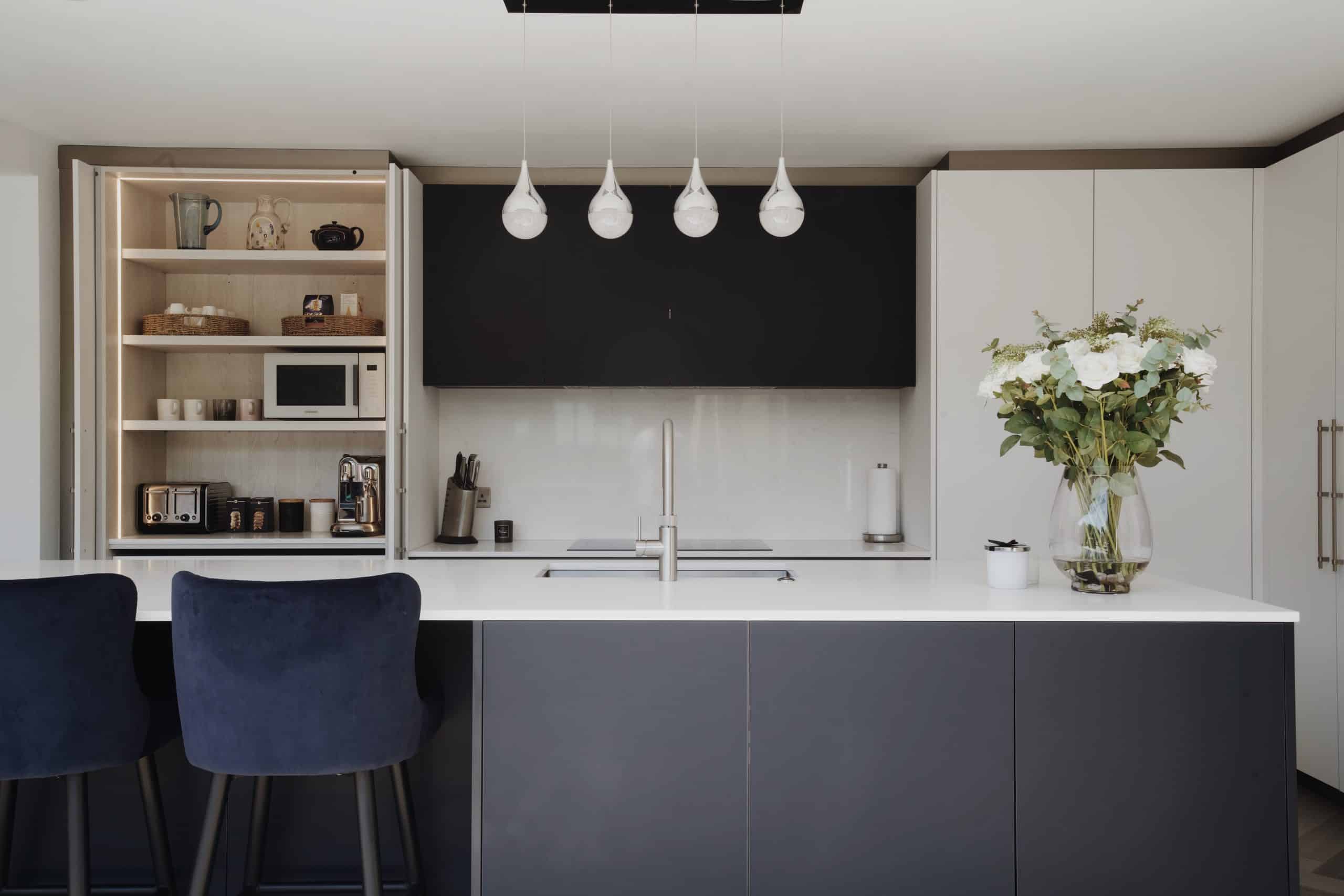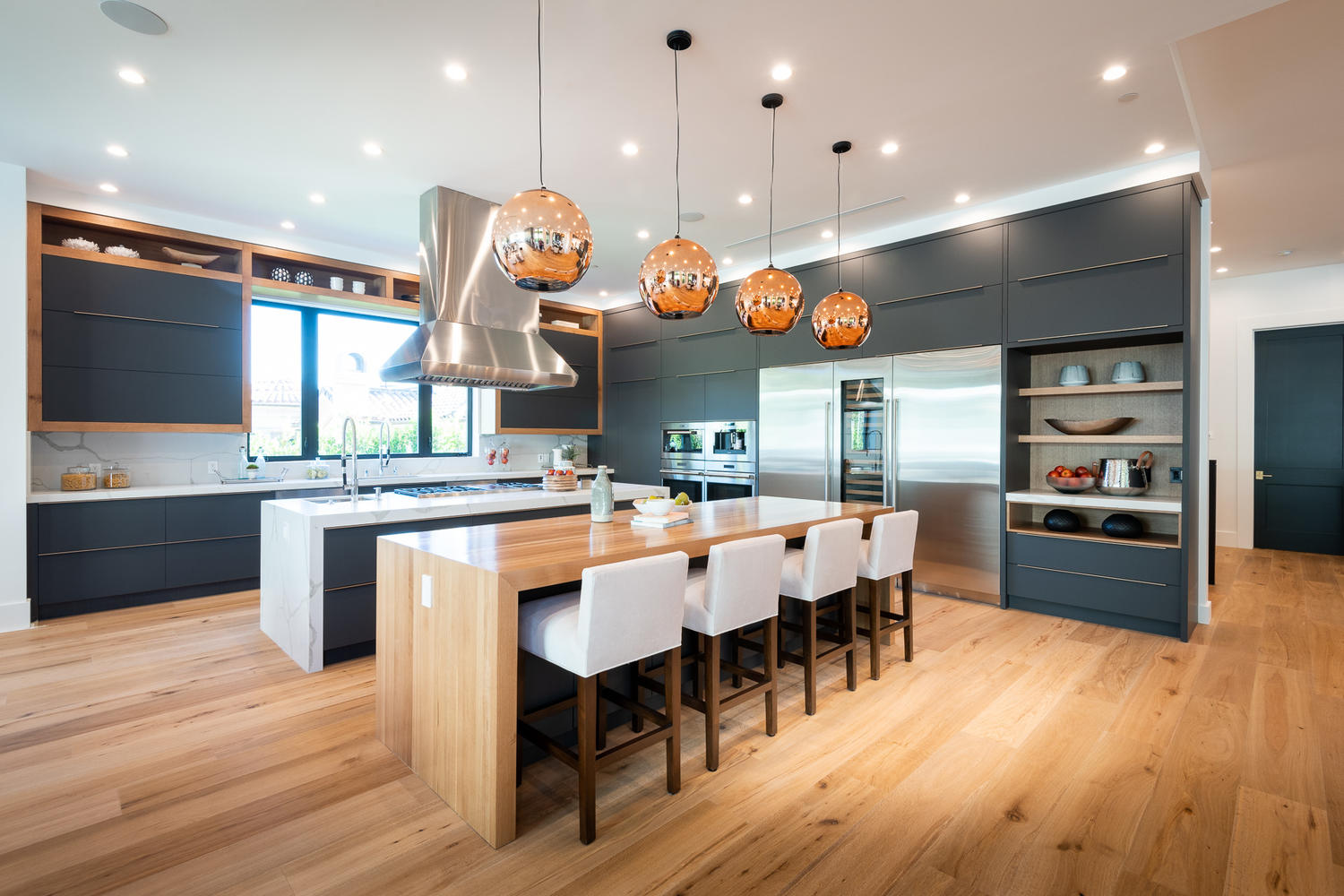Trending Materials and Finishes in Innovative Kitchen Cabinet Design

The modern kitchen is a space of both functionality and aesthetic expression, and innovative cabinet design plays a crucial role in achieving this balance. The choice of materials and finishes significantly impacts the overall look, feel, and longevity of the kitchen. Current trends reflect a desire for both durability and style, incorporating sustainable practices where possible.
Popular Materials in Kitchen Cabinet Design
Material selection for kitchen cabinets is driven by factors like durability, cost, aesthetic appeal, and maintenance requirements. A range of materials caters to diverse styles and budgets, from the classic warmth of wood to the sleek modernity of metals and the practicality of laminates.
| Material | Durability | Cost | Maintenance |
|---|---|---|---|
| Solid Wood (e.g., Oak, Cherry, Maple) | High; resistant to damage with proper care. | High; varies significantly based on wood type and finish. | Moderate; requires regular cleaning and occasional refinishing. |
| Laminate | Moderate; susceptible to chipping and scratching. | Low to Moderate; a cost-effective option. | Low; easy to clean and maintain. |
| Thermofoil (PVC) | Moderate; resistant to moisture but can be scratched. | Low to Moderate; a budget-friendly alternative to wood. | Low; easy to wipe clean. |
| Metal (e.g., Stainless Steel, Aluminum) | High; extremely durable and resistant to damage. | Moderate to High; stainless steel tends to be more expensive. | Low; easily cleaned with mild detergent. |
Innovative Surface Finishes and Their Aesthetic Impact
Surface finishes significantly influence the overall aesthetic of kitchen cabinets. The choice of finish can dramatically alter the perception of space, light, and texture.
The impact of different finishes on the overall kitchen design aesthetic is substantial. Consider these examples:
- Matte Finishes: Offer a subtle, understated elegance. They minimize reflections and create a calming, sophisticated atmosphere. Examples include matte lacquer, matte painted finishes, and certain types of wood stains.
- High-Gloss Finishes: Exude modern luxury. They amplify light and create a sleek, reflective surface. High-gloss lacquers, acrylics, and polished wood are examples.
- Textured Finishes: Add depth and visual interest. They can mimic the look of natural materials or create unique tactile experiences. Examples include wood grain laminates, distressed finishes, and textured paints.
Sustainability and Eco-Friendliness in Cabinet Construction, Innovative kitchen cabinet design
The increasing awareness of environmental concerns has led to a growing demand for sustainable materials and practices in kitchen cabinet manufacturing. Several materials and sourcing methods contribute to eco-friendly cabinet design.
Many manufacturers are now utilizing sustainably sourced wood, certified by organizations like the Forest Stewardship Council (FSC), which ensures responsible forest management. Recycled materials, such as reclaimed wood and post-consumer recycled content in laminates, are also gaining popularity. Bamboo, a rapidly renewable resource, is another sustainable alternative to traditional hardwoods. The use of low-VOC (volatile organic compound) paints and finishes further reduces the environmental impact of cabinet production. These sustainable choices reflect a commitment to minimizing the carbon footprint and promoting responsible resource management within the kitchen design industry.
Space Optimization and Functionality in Innovative Kitchen Cabinet Designs

Maximizing space and functionality is paramount in modern kitchen design, especially in smaller spaces. Innovative cabinet designs offer ingenious solutions to efficiently utilize every inch of available area, enhancing both storage capacity and overall kitchen workflow. This section explores various techniques and technological integrations that achieve this.
Maximizing Storage Space in Small Kitchens
Clever cabinet configurations are key to maximizing storage in compact kitchens. By employing thoughtful design choices, even the smallest kitchens can boast ample storage. The following table illustrates several space-saving cabinet designs and their features:
| Cabinet Configuration | Space-Saving Features | Visual Description |
|---|---|---|
| Pull-out Pantry Cabinets | Full-extension slides provide easy access to all items, maximizing vertical space. Often include adjustable shelves for customized organization. | Imagine a tall, narrow cabinet that smoothly slides out, revealing all contents on easily accessible shelves. The entire depth of the cabinet is utilized, unlike a traditional cabinet where items in the back are hard to reach. |
| Vertical Stacked Cabinets | Utilizes vertical space efficiently by stacking cabinets to the ceiling, increasing storage capacity without expanding footprint. | Picture a series of cabinets stacked on top of each other, reaching from countertop to ceiling. This design maximizes height, creating significant additional storage in a small space. |
| Corner Cabinets with Lazy Susans | Lazy Susans provide easy access to items stored in otherwise hard-to-reach corner cabinets. They rotate, bringing everything within easy reach. | Visualize a corner cabinet with a circular rotating shelf inside. This shelf spins, allowing you to easily access items stored at the back of the cabinet without having to reach awkwardly. |
| Under-Sink Cabinets with Pull-Out Trays | Customizable pull-out trays utilize the often-wasted space under the sink. These trays can hold cleaning supplies, garbage bags, and other items neatly organized. | Imagine a cabinet under the sink fitted with multiple slide-out trays, each dedicated to different cleaning supplies or items. This maximizes the often-underutilized space under the sink. |
Integration of Smart Technology and Features
Smart technology is rapidly transforming kitchen design, integrating seamlessly into cabinets to enhance functionality and convenience. Automated storage systems, built-in charging stations, and intelligent lighting are just a few examples.
Innovative kitchen cabinet design – For instance, automated storage systems can use motorized mechanisms to reveal hidden compartments or automatically retrieve stored items. These systems are particularly useful in maximizing vertical space and providing easy access to items stored high up or in difficult-to-reach areas. Imagine a cabinet that silently slides open at the touch of a button, revealing a hidden spice rack or a set of rarely-used cookware.
Built-in charging stations within cabinets offer a convenient and clutter-free way to charge multiple devices. These stations can be discreetly integrated into cabinet designs, keeping charging cables and devices organized and out of sight. Picture a drawer with built-in USB ports and wireless charging pads, neatly tucked away in a cabinet, offering a clean and organized charging solution.
Specialized Cabinets for Specific Kitchen Needs
Different kitchen areas have unique storage requirements. Specialized cabinets are designed to cater to these specific needs, improving efficiency and organization.
The following Artikels the features and advantages of various specialized cabinets:
- Corner Cabinets: Often incorporate Lazy Susans or pull-out shelves to maximize accessibility in awkward corners. This eliminates wasted space and makes efficient use of otherwise difficult-to-reach areas.
- Pantry Cabinets: Typically feature adjustable shelves, pull-out drawers, and sometimes even internal lighting to create a highly organized and easily accessible pantry area. This improves organization and makes finding items simpler.
- Spice Racks: Can be integrated into cabinet doors or drawers, providing easy access to frequently used spices while keeping them organized and contained. This keeps spices within easy reach and adds to the overall kitchen aesthetic.
Aesthetic Trends and Design Styles in Innovative Kitchen Cabinet Designs

The aesthetic direction of kitchen cabinet design significantly impacts the overall feel and functionality of a space. Choosing a style that complements your personal taste and the architecture of your home is crucial for creating a kitchen you’ll love for years to come. This section explores three prominent aesthetic trends, highlighting their defining characteristics and demonstrating how they can be implemented in innovative cabinet designs.
Comparison of Minimalist, Rustic, and Modern Farmhouse Cabinet Styles
Three distinct aesthetic trends currently shaping innovative kitchen cabinet design are minimalist, rustic, and modern farmhouse styles. Each offers a unique approach to form and function, catering to different preferences and architectural contexts.
Minimalist kitchen cabinets prioritize clean lines, simple forms, and a lack of ornamentation. The focus is on functionality and a sense of spaciousness. Color palettes are typically neutral, with a preference for light tones.
Rustic kitchen cabinets embrace natural materials and textures, often featuring visible wood grain, distressed finishes, and handcrafted details. These designs evoke a sense of warmth, comfort, and connection to nature. Color palettes tend towards earth tones and warm neutrals.
Modern farmhouse kitchen cabinets blend the clean lines of modern design with the rustic charm of farmhouse aesthetics. This style often incorporates a mix of materials, such as wood and metal, and features a balance of simplicity and warmth. Color palettes typically include a mix of whites, creams, and natural wood tones, sometimes accented with bolder colors.
Visual Representation of a Modern Farmhouse Kitchen with Innovative Cabinet Design
Imagine a kitchen bathed in soft, natural light. The cabinets are a mix of creamy white shaker-style doors and open shelving crafted from reclaimed, light oak. The oak shelves showcase a curated collection of ceramic dishes and vintage cookbooks, adding a touch of personality and warmth. The white shaker cabinets feature sleek, brushed nickel hardware – simple cup pulls that are both functional and visually appealing. The countertops are a contrasting yet complementary honed Carrara marble, its subtle veining adding visual interest without overwhelming the space. A large island, clad in the same creamy white cabinetry, provides ample workspace and seating. The island features a butcher block countertop, adding a touch of rustic charm and practicality. The overall aesthetic is one of relaxed sophistication, blending the clean lines of modern design with the cozy warmth of a farmhouse kitchen. The innovative aspect lies in the incorporation of open shelving, maximizing both storage and visual appeal, and the clever use of contrasting materials to create a balanced and harmonious space. The choice of brushed nickel hardware provides a subtle, sophisticated touch that complements both the white cabinets and the oak shelves, tying the design together. The color palette of creamy white, light oak, and Carrara marble creates a feeling of airy spaciousness and understated elegance.
